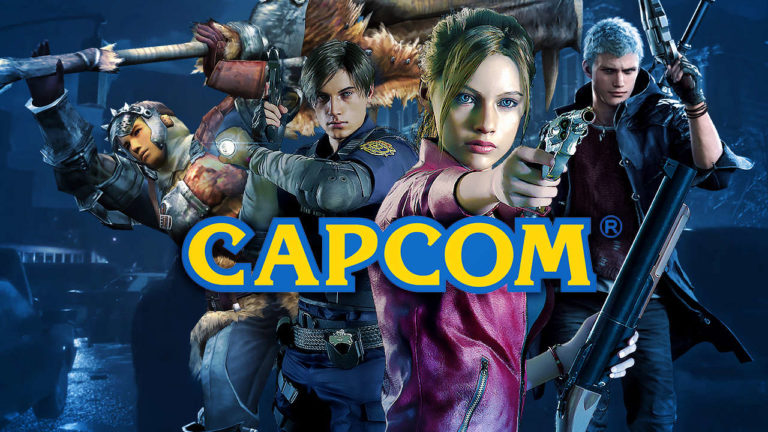Title: Resident Evil: The Darkside Chronicles.
Developer: Cavia, Capcom
Publisher: Capcom
Rarely does a series of a decade plus have such a fanbase as Resident Evil does. Rarely does a decade plus series mess with the formula that took it where it is today. 2007’s Umbrella Chronicles showed us that it could be done. 2009’s The Darkside Chronicles shows us that it can be done better.
Set in 2002, Resident Evil: The Darkside Chronicles retells the events of Resident Evil 2 and Resident Evil: Code Veronica. Uniquely, it is told through the eyes of fan favorite Leon S. Kennedy in the middle of a new mission in a remote South American Villiage. Accompanied by Jack Krauser, Leon ventures in to the villiage to discover that not all is as it seems. A biohazard has broken out and the pair must find out why, this is on top of trying to find Javier Hildalgo, a famed druglord and top suspect in the biohazard outbreak.
The story is well told and is very fluid. You’ll find yourself going through parts of “Operation Javier” as well as revisting Raccoon City and Rockfort Island in the process. The transistion is smooth and never once feels forced. All this adds to a superb experience without having to switch menus or fuss about selecting a map, although the option to do that is also available. The Games menus are easy to navigate but one quarry I had with the menu was the design. I loved the rural feel of Umbrella Chronicles’s menu system. It added to the overall feel of the game itself, and although you can argue that this games menus add to the feel as well, I just couldn’t get past how bland and boring they all where.
While the menus may in my opinion be bland and mundane, I cannot speak the same about the graphics. Umbrella Chronicles Boasted respectable graphics in it own right. Yet Darkside takes it to a new level. From the beautifuly lighted alleys of Mixcoatl village(nick-named the Waterside Villiage) to the dark, dusty undead streets of Raccon City and Rockfort Island, its apparent that Cavia and Capcom wanted to do this one right. Hardly does the framerate take a dive and if it does it’s very minimal. Cutscenes are beautifully rendered and sound quality is top notch. There is but one major problem I have with the graphics. Every third or fourth zombie just happens to look exactely like one you just killed. This is a minor problem to most people yes, but it is a pet peeve of mine. This problem could have been resolved by changing the skin of a few models or creating new skins altogether. Instead you get the same tank-top wearing, daisy duke short wearing Female zombie over and over again.
Cavia didn’t completly mess it up though. New to the series is a Havok based engine that does wonders to the game. Lights react the way they should and shadows are bold and dynamic. Shoot a light out and you must now rely on ambient light to survive. Anything from windows, to boxes to furniture is destructable. Anything that can be destroyed will react realistically due to the physics based Havok engine. A box falling from a higher hieght will bounce harder than a box from a short vertical height. Heavier thing will not react as easily as lighter items. All this makes the game feel complete and polish and never a drag. Also enemies will react differently then Umbrella Chronicles. For example, a zombie of a more girth variety, will jiggle about when you shoot the as oppose to a fitter zombie. Female zombies with a ahem….well endowed chest will bounce around realistically and hats will flutter in the wind when you shoot them off.
The gameplay remains for the most part unchanged from Umbrella Chronicles. New to the series is the ability to see your partner on screen. You may think that is purely cosmetic, but in fact affects the gameplay greatly. Now, because you can see the other person, you each have your own life bar. If said partner gets attacked its up to you to rescue him or he/she will die. Computer players are of great help in this game. They take shots, take hits, and point out dangers around you. It does get a bit annoying when you line up a headshot only to have your partner take it instead. Overall though it is much better than playing as one charactor when there are supposed to be two on screen. It adds to the stratagy of the game and is a welcomed addition. What is not a welcomed addition however is the shared ammo pool. As you can imagine that can get a bit frustrating when playing with a player that is not of your skill level. Speaking of Skill level, the usual suspects return. Players can switch between easy, normal or hard. Easy is by far the most improved. New to the series is assistance for players that may not be as skilled as others. In easy mode, you will have the option of auto targeting your enemies by pressing A on the Wii remote. Its one way players of a certain skill level can enjoy the game without having to commit to hours of gameplay to get it downpacked.
The difficulty has been ramped up, and it has nothing to do with what difficulty you have it on. New to the series is the “Cinematic Camera Angles”, otherwise known as the “Shaky Cam”. I can see where Capcom wanted to go to with this but they failed to deliver. My opinion is they wanted to increase the difficulty by increasing the realism of the game. Instead they only increased the difficulty. Many times you will line up a shot only to have the camera sway wildly for no apparent reason. I guess one can argue that it does increase the difficulty but I don’t particularly care for it.
Zombie have been greatly improved apon. In Memories of a Lost City, The City is overunned with Zombies. Alot of those are Raccon City police Officers. Trying to shot an officer in the chest or torso will result in more bullets wasted due to there bullet-proof vest. Zombies with open midriffs will take considerably less bullets to take down. Constuction workers with hard hats will first need to be shot in the head to remove the hats in order to attempt a headshot. Same goes for Zombies with hats on, to a lesser extent. They are also harder to hit now for two reasons. One is the obvious “Shaky Cam”. The other is they now think more independent, as in they don’t all have Hive Mind anymore. One Zombie will shuffle towards you, while another will hurl projectile vomit at you. One Zombie will run at you while another patiently waits his turn. It seemed randomed and not at all forced.
Boss battles rarely feel forced or mechanical. They take independent paths and often need special goals in order to finish them off. The Archive, first introduce in Umbrella Chronicles, returns bigger and better. The Archive has been improved to include Text Files, B.O.W data, Weapons data, Items, Charactor Bios and a New Award System. The award system works as a Title awarder. In order to earn titles you must first accomplish certain tasks, like killing a certain number of Zombies or getting a certain number of Headshots. Its a nice little boost to your ego to get these awards and the 100% completetionist will go crazy for it.
Final Comments and Score.
It’s easy to get sucked into the whole “well this isn’t a true Resident Evil game so it sucks” argument. It is not a true resident evil game. The light gun games have never claimed they where. Somehow though, someone takes it apon him/herself to belittle this game for trying to be different. Thats a shame in my opinion and one that I hope one day can be resolved. This is a good game that is being overlooked by many “Fans” of the series. I hope you take a chance to play it and Purchase it because I believe that the Light Gun Resident Evil games can and will thrive in the future. Thank you for reading this review and I hope you comment on it.
Gameplay: 8/10
Graphics: 8/10
Sound: 8/10
Presentation 9/10
Overall 33/40
Thanks Again.
Jesus “SwitchBlade” Ramirez




